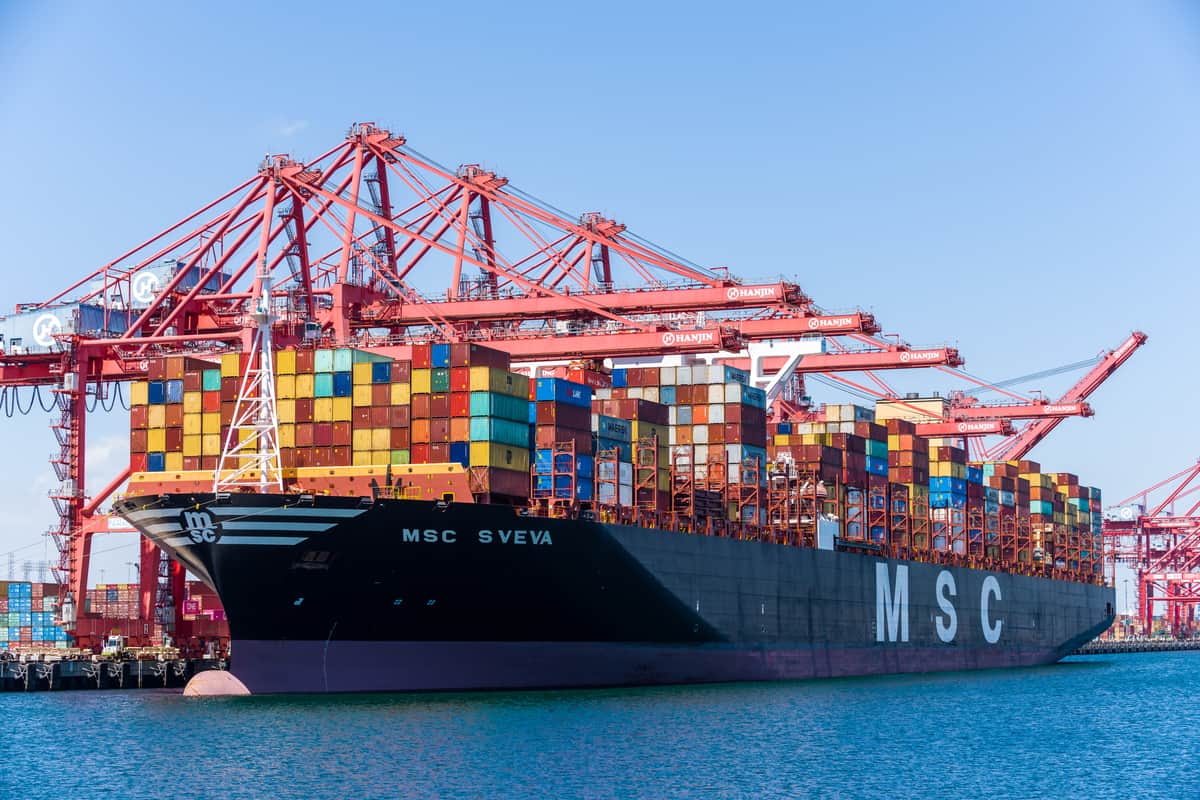import volume
SONAR Sightings: Volumes slump further in Atlanta, near low in Elizabeth, New Jersey
Atlanta still owns the most market share by outbound volume but saw a drop in its value as demand falls further. Imports to the Port of New York and New Jersey fell to their lowest levels since 2021, bringing surface transportation volumes down with them.
SONAR Sightings: Atlanta volumes gain momentum; NY/NJ imports drop again
Outbound volumes from Atlanta are picking back up after hitting their lowest levels since 2020, and imports to the Port of New York and New Jersey drop, dragging truckload volumes with them.
SONAR Sightings: Volume surges in Fort Worth; diesel plateaus at $5.36
Outbound demand in Fort Worth, Texas, is up for the second week in a row, and diesel prices have stopped increasing but show no sign of which direction they will go next.
SONAR Sightings: New York/New Jersey import volumes rise; Detroit volumes reach ceiling
Imported container volumes to the Port of New York and New Jersey are up this week after a 27% decline, and outbound volumes in Detroit remain high but aren’t gaining any more ground.
SONAR Sightings: Houston imports bring trucking volume out of 5-month low; Northwest reefer demand increases
Imports to the Port of Houston saw an increase in the first week of October, bringing up truckload volumes. Fall produce in Spokane, Washington, builds demand.
SONAR Sightings: Imports to LA rise this week, boosting truckload volumes
Imported container volumes to LA are up this week after taking a drop in the beginning of Q4, allowing the surface transportation market to start to recover leading into peak season.
SONAR Sightings: Southern California volumes edge upward; Germany to US rates rise
After a monthlong decline in volumes from Southern California, they begin to tick upward this week, and spot rates from Rotterdam to New York rise 8.4%.
SONAR Sightings: Southern California rejections remain below 3%; Houston imports fall
Truckload volumes in Ontario, California, decline as the ports hit their lowest market share in decades, and Port Houston sees a drop in imports.
SONAR Sightings for Sept. 9: Phoenix, Denver outbound volumes recover quickly
Phoenix and Denver are both seeing an uptick in outbound volumes days after the holiday drop, and capacity in Elizabeth, New Jersey, handles the increased port volume.
SONAR Sightings for June 29: Volume imported to New York/New Jersey spikes; volume out of Indianapolis up 8%
The Port of New York and New Jersey has seen a rise of 49% in the last week while tender rejections out of Elizabeth remain stable at 6.5%.
Bank of America and J.P. Morgan are sounding the alarm on weak US imports
Analysts from J.P. Morgan and Bank of America warned of an impending disaster for U.S. imports.
Port of Long Beach smashes container records in March
If you ordered a fire pit or a rowing machine online, there’s a good chance it’s coming through the Port of Long Beach. The port is moving record amounts of containers and shipments are experiencing delays.
March US rail volumes up 14% amid uneven year-over-year comparisons
U.S. rail traffic rose 14% in March amid higher grain and intermodal volumes. But some commodities are also reflecting uneven year-over-year comparisons because of the pandemic-induced volume downturn that began in late March 2020.
Viewpoint: Container congestion may now impact Easter
Due to shipping snarl and container congestions, delays in retail inventories will be felt from Christmas through Easter.
2020 closes with plenty (of freight) left in the tank
Imports continue to pile up as shippers and carriers take time for the holidays. They may come back to a mess.
C.H. Robinson: Time is running out to recoup paid tariffs
Many companies may have been paying tariffs on imports from China they were not required to pay. C.H. Robinson is trying to help businesses identify what they may be owed ahead of a Dec. 31 deadline to apply for reimbursement.
Trade outlook clouds Port of Oakland forecast
“We’re not doing any victory celebrations because the trade outlook remains unclear as long as the pandemic is with us.”
Port of Long Beach posts 11.1% container decline
Canceled San Pedro Bay calls more than doubled in the first half of the year compared to 2019.
Port of Oakland volume uptick pleasant surprise
Boost attributed to retailers trying to beat capacity constraints and rate hikes.
Port of LA director fears permanent loss of imports
Gene Seroka reports worst May in more than a decade, predicts 15% of import cargo won’t return






















